Home>Dining>Table Decor>How To Sell Floral Arrangements


Table Decor
How To Sell Floral Arrangements
Modified: January 5, 2024
Learn how to sell floral arrangements and create stunning table decor. Discover tips and tricks to maximize your sales and impress your customers.
(Many of the links in this article redirect to a specific reviewed product. Your purchase of these products through affiliate links helps to generate commission for Storables.com, at no extra cost. Learn more)
Introduction
Welcome to the world of floral arrangements! Whether you have a passion for flowers or are looking to start a business in the vibrant and evergreen industry, this comprehensive guide will provide you with valuable insights on how to sell floral arrangements.
Floral arrangements are a form of art that combines the beauty of nature with creative design. They have the power to brighten up any space and evoke emotions in people. From weddings and special events to everyday home decor, there is a constant demand for stunning and unique floral arrangements.
In this article, we will explore various aspects of selling floral arrangements, from understanding the market to developing effective marketing strategies. We will delve into the world of flower selection, design techniques, pricing strategies, and more.
Understanding the floral arrangement market is crucial for success. Research the local market and identify the target audience. Consider factors such as demographics, preferences, and trends. This knowledge will help you tailor your designs and marketing efforts to meet the needs of your customers.
The foundation of a stunning floral arrangement lies in selecting and sourcing high-quality flowers. Seek out local flower farms, wholesalers, or even consider growing your own flowers to ensure freshness and uniqueness. Learn about different flower varieties and their seasonal availability. By offering a wide range of flowers, you can cater to a diverse customer base and create arrangements that cater to various occasions and preferences.
Designing eye-catching floral arrangements requires a keen sense of creativity and attention to detail. Experiment with different color combinations, textures, and shapes to create visually appealing designs. Consider incorporating elements such as foliage, berries, or even unique accessories to add depth and personality to your arrangements. Keep abreast of current design trends and continuously refine your skills to stay ahead of the competition.
Pricing your floral arrangements appropriately is essential for both profitability and customer satisfaction. Consider factors such as the cost of materials, labor, and delivery when determining the price. Factor in the value of your expertise and the uniqueness of your designs. Research competitors’ pricing to ensure your prices are competitive without undervaluing your work.
Effective marketing and advertising strategies are crucial for promoting your floral arrangements. Establish an online presence through a website and social media platforms. Showcase your designs through captivating photographs and engaging content. Collaborate with photographers, wedding planners, and event venues to expand your reach. Participate in local events, such as farmers’ markets or craft fairs, to connect with potential customers face-to-face.
Selling floral arrangements online opens up a world of opportunities. Create an e-commerce store where customers can browse and purchase your products. Invest in high-quality product photography and provide detailed product descriptions to entice buyers. Ensure a seamless online shopping experience with user-friendly navigation and secure payment options.
Building relationships with local businesses can significantly boost your sales. Collaborate with spas, hotels, restaurants, and retail stores to become their trusted floral supplier. Offer exclusive discounts or customized arrangements to incentivize repeat business from these establishments.
Setting up a pop-up shop or stall in busy urban areas can attract attention and increase sales. Decorate your stall with eye-catching arrangements to draw in customers. Engage with passersby and offer them a glimpse into the beauty and elegance of your floral creations.
Key Takeaways:
- Understanding the floral arrangement market, selecting quality flowers, and providing exceptional customer service are essential for success in the floral business. Effective marketing and collaboration with local businesses can also boost sales and visibility.
- Efficient inventory management, reliable packaging, and shipping methods, along with continuous improvement and personalized service, are key factors in providing excellent customer experience and satisfaction in the floral business.
Read more: How To Arrange Ikebana Floral Arrangements
Understanding the Floral Arrangement Market
Before diving into the world of selling floral arrangements, it’s essential to gain a deep understanding of the market. By researching and analyzing the current trends, preferences, and demographics, you can tailor your offerings to meet the needs of your target audience and stand out from the competition.
Start by conducting thorough market research. Explore the local floral industry by visiting botanical gardens, flower shops, and attending flower shows or exhibitions. Observe the types of arrangements that are popular, the price ranges, and the overall demand in your area. This will help you identify any gaps in the market that you can fill with your unique designs and approach.
Next, define your target audience. Consider factors such as age, gender, lifestyle, and preferences. Are you targeting individuals who love receiving flowers as gifts, or are you focusing on event planners who need arrangements for weddings and corporate events? Understanding your audience will enable you to create designs and marketing strategies that resonate with them.
Keep abreast of the latest floral trends. Floral arrangement styles evolve, just like any other fashion or design trend. Stay updated on the current color palettes, flower types, and design aesthetics that are in demand. This knowledge will not only help you create arrangements that are on-trend but also demonstrate your expertise and ability to stay relevant in the industry.
Consider the seasonal nature of the floral industry. Different flowers bloom at different times of the year, and customers often have specific preferences depending on the occasion or season. For example, during spring, pastel-colored arrangements with tulips and daffodils may be popular, while rich, warm-toned arrangements with roses and dahlias may be sought after in the fall. Understanding the seasonal demand will help you plan your inventory and stay ahead of customer expectations.
Identify your unique selling points (USPs). With the market becoming increasingly competitive, it’s crucial to differentiate yourself from others. Determine what sets your floral arrangements apart from the rest. It could be your innovative use of accessories, your focus on sustainable and eco-friendly practices, or your commitment to using only locally sourced flowers. Highlight these USPs in your marketing efforts to attract customers who resonate with your values and offerings.
Additionally, networking with other professionals in the floral industry can provide valuable insights and potential collaborations. Attend industry events, join floral associations, and connect with local florists. By building relationships with suppliers, event planners, and wedding venues, you can create a robust network that supports your growth and opens up new business opportunities.
By understanding the floral arrangement market, you can position yourself as a trusted provider who meets the needs and desires of your target audience. Armed with this knowledge, you’ll be well-equipped to create stunning arrangements that capture hearts and drive sales.
Selecting and Sourcing Quality Flowers
When it comes to selling floral arrangements, the quality of your flowers plays a vital role in the overall success of your business. Customers expect fresh, vibrant flowers that will last and bring joy for as long as possible. Selecting and sourcing high-quality flowers is essential to meet these expectations and build a reputation for excellence.
One of the first steps in selecting quality flowers is finding reliable suppliers. Research local flower farms, wholesalers, and importers to identify those who consistently provide fresh and top-notch blooms. Ask for recommendations from other florists or industry professionals to ensure you’re partnering with trustworthy suppliers.
Consider the variety of flowers offered by your suppliers. Look for diverse options that cater to different occasions, preferences, and seasons. Offering a wide selection of flowers allows you to create arrangements that cater to various customer needs and preferences, increasing your chances of making a sale. Be aware of the seasonal availability of different flowers to ensure you can provide the freshest and most in-demand blooms all year round.
Inspect the quality of flowers before making a purchase. Look for blooms that are free from blemishes, discoloration, or signs of wilting. Check the stems to ensure they are firm and not withered. Examine the foliage for any signs of damage or yellowing. Fresh flowers should have a vibrant color, a pleasant fragrance, and feel taut when gently squeezed.
Consider the sustainability and ethical practices of your suppliers. Increasingly, customers are becoming more conscious of the environmental impact of their purchases. Seek out suppliers who follow sustainable farming practices and prioritize responsible sourcing. This can include using organic fertilizers, reducing water usage, and supporting fair trade initiatives.
Think about the freshness and longevity of the flowers. Your customers want arrangements that will last as long as possible. Choose flowers that are in the early stages of blooming, as these will have a longer vase life. Avoid selecting flowers that are already fully bloomed, as they may wilt quickly. Additionally, ensure the flowers have been properly stored and transported to maintain their freshness and vitality.
Consider the unique aspects and specialties of your region. Some areas are known for producing particular flowers or have local flower farms that offer unique varieties. Embracing local flowers can not only enhance the authenticity of your arrangements but also support the local economy and reduce carbon emissions associated with long-distance transportation.
It’s also worth considering growing some flowers yourself. Having your garden or greenhouse allows you to have control over the quality, availability, and uniqueness of certain blooms. This also adds a personal touch to your floral arrangements and can be a point of differentiation from other florists.
By selecting and sourcing quality flowers, you can ensure that your floral arrangements are visually stunning, long-lasting, and deliver the highest level of customer satisfaction. Partner with reputable suppliers, prioritize freshness and sustainability, and embrace local and unique flower varieties to set your floral business apart from the competition.
Designing Eye-Catching Floral Arrangements
Designing eye-catching floral arrangements is an essential skill that sets successful florists apart from the rest. A well-designed arrangement not only captures attention but also elicits emotions and creates a lasting impression. Here are some key tips to help you create stunning floral arrangements that will captivate your customers:
1. Start with a focal point: Choose a standout flower or element that will be the centerpiece of your arrangement. This focal point will draw the viewer’s eyes and set the tone for the overall design.
2. Consider color and contrast: Play with different color combinations to make your arrangement visually striking. Experiment with complementary colors for a harmonious look or contrasting colors for a bold and dramatic effect. Additionally, incorporate different textures and shapes to add depth and interest to your arrangement.
3. Balance and proportion: Maintain balance in your arrangement by distributing visual weight evenly. Consider the size and shape of each element in relation to others. Use taller stems or larger blooms as anchors and fill in with smaller flowers or foliage to create a well-proportioned design.
4. Mix different flower varieties: Don’t be afraid to combine different types of flowers to create a dynamic and unique arrangement. Mix blooms with varying petal structures, sizes, and colors to create a visually appealing contrast. Consider the overall theme or message of the arrangement to guide your choices.
5. Pay attention to focal lines and movement: Utilize focal lines to guide the viewer’s eye through the arrangement. These can be created by arranging flowers in a diagonal or cascading pattern. Incorporating fluid movement adds a sense of dynamism and energy to your arrangement.
6. Incorporate foliage and greenery: Greenery and foliage are essential elements in floral designs. They provide a backdrop for the blooms and add depth and texture to the arrangement. Experiment with different types of foliage, such as eucalyptus or ferns, to enhance the overall aesthetic.
7. Pay attention to vase or container selection: The choice of vase or container can greatly enhance the visual impact of your arrangement. Consider the style and size of the container in relation to the flowers. A sleek and modern arrangement may benefit from a minimalist vase, while a rustic bouquet could be complemented by a vintage-style container.
8. Embrace creativity and individuality: Don’t be afraid to think outside the box and let your creativity shine through. Incorporate unique elements such as branches, feathers, or seashells to add interest and personality to your arrangements. Remember, your designs should reflect your style and artistic vision.
9. Take inspiration from nature and current trends: Nature itself is a great source of inspiration. Observe the shapes, colors, and patterns found in the natural world and incorporate them into your designs. Stay updated on current floral trends and adapt them to your signature style.
10. Continuously refine your skills: Designing floral arrangements is an art form that requires practice and continuous improvement. Attend workshops, take courses, and seek feedback from fellow florists or mentors. Stay open to learning new techniques and exploring different design approaches.
Designing eye-catching floral arrangements is both a skill and a form of self-expression. By incorporating these tips and adding your unique artistic touch, you can create arrangements that stand out from the crowd and leave a lasting impression on your customers.
Pricing Your Floral Arrangements
Pricing your floral arrangements effectively is crucial for the success and sustainability of your business. While setting prices may seem daunting, by considering various factors and employing sound pricing strategies, you can ensure that your floral arrangements are not only profitable but also attractive to your target market.
Start by calculating the cost of materials. This includes the flowers, foliage, containers, ribbons, and any other accessories or embellishments used in the arrangement. Keep detailed records of your expenses to accurately assess the cost of materials. Consider the quality of the flowers and factors such as seasonality that may affect their pricing.
Factor in labor costs. Determine how much time and effort goes into creating each arrangement. Consider both the design and assembly processes, as well as any additional tasks like sourcing materials or conditioning the flowers. Be sure to account for the expertise and experience you bring to the table when setting your labor costs.
Consider overhead expenses. These include rent for your storefront or studio space, utilities, marketing expenses, employee wages, and any other costs associated with running your floral business. Allocate a portion of these overhead expenses to each floral arrangement to ensure that you are covering your operational costs.
Research the market. Examine the prices of similar floral arrangements in your area or online. This will give you an idea of the range of prices that customers are willing to pay. Take note of the competition and the value they offer to ensure that your prices remain competitive while reflecting the quality and uniqueness of your designs.
Consider your target market. Are you catering to budget-conscious customers or those with more disposable income? Understanding the purchasing power and preferences of your target market will help you set prices that match their expectations. Keep an eye on industry trends and customer demands to ensure you are offering arrangements that align with their needs and desires.
Take into account the value of your designs. If you offer unique and custom designs or if you have a reputation for creating high-quality arrangements, you can justify charging premium prices. Emphasize the craftsmanship, attention to detail, and expertise that goes into each arrangement to communicate the value to your customers.
Consider the occasion. Different occasions may warrant different pricing structures. Wedding and event arrangements, for example, may require additional consultation, setup, and delivery services, which should be factored into the overall cost. Specialized arrangements for holidays or corporate events may also have different pricing considerations.
Offer pricing tiers. Provide options for customers with different budgets by offering various pricing tiers. This can include basic, standard, and premium options with corresponding variations in flower selection, size, and overall design complexity. This allows you to cater to a wider range of customers while providing flexibility in pricing.
Test and adjust your prices. Initially, it may be difficult to determine the ideal pricing for your arrangements. Experiment with different price points and monitor customer response and sales. Analyze your profit margins and adjust prices accordingly to ensure your business remains profitable while providing value to your customers.
Lastly, regularly review and reevaluate your pricing strategy. Keep track of market trends, cost fluctuations, and changes in customer preferences to ensure that your prices remain competitive and aligned with your business goals.
Pricing your floral arrangements is a delicate balance between covering costs, meeting customer expectations, and maintaining profitability. By considering various factors and employing effective pricing strategies, you can ensure that your floral business thrives in a competitive market.
Read more: What Are Floral Arrangements
Marketing and Advertising Strategies
Marketing and advertising are essential for promoting your floral arrangements and reaching your target audience. In a competitive market, it is important to develop effective strategies that showcase your unique designs and attract customers. Here are some key marketing and advertising strategies to help you boost visibility and drive sales:
1. Create a brand identity: Develop a strong brand identity that reflects your floral business. This includes your logo, colors, fonts, and overall visual aesthetic. Consistency in branding helps customers recognize and remember your business. Incorporate your brand identity into all marketing materials, including your website, social media profiles, and physical signage.
2. Build an online presence: Establish a professional website where customers can browse your floral arrangements and learn more about your business. Optimize your website for search engines by incorporating relevant keywords throughout your content. Showcase high-quality images of your arrangements and provide detailed product descriptions. Make the ordering process seamless and secure, with clear calls-to-action for customers to purchase your arrangements.
3. Leverage social media platforms: Utilize social media platforms such as Facebook, Instagram, and Pinterest to showcase your floral designs and engage with your audience. Post captivating images of your arrangements along with engaging captions. Use relevant hashtags to reach a wider audience. Engage with followers by responding to comments and messages promptly. Collaborate with influencers or partner with local businesses for cross-promotion.
4. Content marketing: Create valuable and informative content related to floral arrangements and gardening. Start a blog on your website where you can share floral care tips, wedding flower trends, DIY arrangement ideas, and more. Share your blog posts on social media to drive traffic to your website and establish yourself as an industry expert.
5. Participate in local events: Take advantage of local events such as farmers’ markets, craft fairs, or community gatherings to showcase your floral arrangements. Set up a stall or booth and arrange your designs attractively. Provide business cards and brochures to interested customers. Collect email addresses or offer exclusive discounts to grow your customer database.
6. Collaborate with other businesses: Form partnerships with local wedding planners, event venues, photographers, and other related businesses. Offer to provide floral arrangements for their events and in return, benefit from their referrals and promotion. Cross-promote each other’s businesses through social media or joint marketing campaigns.
7. Offer personalized services: Stand out from the competition by offering personalized services such as consultations for weddings or special events. Provide customized arrangements based on customer preferences, themes, and budgets. Make the experience memorable by going the extra mile to understand and fulfill your customers’ needs.
8. Utilize email marketing: Create an email newsletter to stay in touch with your customers. Offer exclusive promotions, share floral care tips, or announce new product launches. Segment your email list to send targeted messages based on customer preferences or past purchases.
9. Utilize customer testimonials and reviews: Encourage satisfied customers to leave reviews and testimonials on your website, social media platforms, or third-party review websites. Positive reviews build trust and credibility, which can significantly impact a potential customer’s decision to purchase from you.
10. Stay updated on industry trends: Keep track of the latest floral design trends and incorporate them into your marketing efforts. Stay on top of seasonal trends, color palettes, and popular flower choices for different occasions. This demonstrates your knowledge and ability to provide up-to-date and on-trend floral arrangements.
Remember, consistency is key in your marketing and advertising efforts. Be active on your chosen platforms, engage with your audience, and regularly evaluate the effectiveness of your strategies. By implementing these strategies, you can increase your brand visibility, attract more customers, and ultimately boost sales of your floral arrangements.
Selling Floral Arrangements Online
In today’s digital age, selling floral arrangements online is an excellent way to expand your customer base and increase sales. With the right approach, you can showcase your designs to a global audience and provide a convenient shopping experience for your customers. Here are some key strategies to help you effectively sell floral arrangements online:
1. Create a user-friendly website: Invest in a well-designed website that is easy to navigate and visually appealing. Ensure that your website is mobile-responsive, as many customers prefer to shop on their smartphones or tablets. Display your floral arrangements with high-quality images and provide clear product descriptions, including flower types, sizes, and pricing. Include an easy-to-use shopping cart and secure payment options for a seamless online shopping experience.
2. Optimize for search engines: Use relevant keywords throughout your website content to improve its visibility in search engine results. Research and incorporate keywords that potential customers are likely to use when searching for floral arrangements online. This will help drive organic traffic to your website and increase the chances of making a sale.
3. Offer a variety of arrangements: Provide a diverse range of floral arrangements to cater to different tastes, occasions, and budgets. Consider offering options for customizations, such as the choice of flower types or colors. This allows customers to personalize their orders and increases the likelihood of making a sale.
4. Showcase testimonials and reviews: Display customer testimonials and reviews on your website to build trust and credibility. Positive feedback from satisfied customers can greatly influence potential buyers’ purchasing decisions. Encourage customers to leave reviews after their purchase and share their positive experiences on social media.
5. Utilize social media platforms: Leverage the power of social media to promote your floral arrangements and reach a wider audience. Create captivating content featuring your arrangements and share it on platforms such as Instagram, Facebook, and Pinterest. Use relevant hashtags and engage with users to build a strong online presence and attract followers. Consider running targeted ads on social media platforms to increase the visibility of your products.
6. Provide excellent customer service: Customer service is crucial for generating repeat business and positive word-of-mouth referrals. Respond to customer inquiries and concerns in a timely and professional manner. Offer various communication channels, such as email, live chat, or phone, to cater to different customer preferences. Provide accurate order tracking information and ensure that deliveries are made on time.
7. Offer incentives and promotions: Attract customers by offering incentives and promotions. Provide special discounts for first-time purchasers or free shipping for orders over a certain amount. Consider running limited-time promotions or exclusive deals for loyal customers to encourage repeat business.
8. Ensure efficient packaging and shipping: Proper packaging is crucial to ensure that your floral arrangements arrive in pristine condition. Use sturdy boxes, secure the arrangements with tissue paper or bubble wrap, and include any necessary care instructions. Partner with reliable shipping services to ensure timely and safe delivery. Offer tracking options and communicate with customers regarding the status of their orders.
9. Provide a personalized touch: Enhance the online shopping experience by adding a personal touch to each order. Include a handwritten note, a small gift, or a personalized message to make the recipient feel special. This extra level of care and attention can go a long way in building customer loyalty.
10. Continuously improve and adapt: Take customer feedback into consideration and make improvements. Regularly assess your website’s performance, launch new products or seasonal offerings, and stay updated on industry trends. Stay ahead of the competition by continuously improving your online presence and implementing new strategies to drive sales.
Selling floral arrangements online provides you with a vast potential customer base. By implementing these strategies, you can effectively showcase your designs, provide a seamless online shopping experience, and build a strong online presence to increase sales and grow your floral business.
Building Relationships with Local Businesses
Building strong relationships with local businesses can be a valuable strategy for growing your floral business. Collaborating with other businesses not only expands your reach but also provides opportunities for cross-promotion and referrals. Here are some key strategies to help you build relationships with local businesses:
1. Research and identify potential partners: Start by researching and identifying local businesses that align with your target market and brand. Look for complementary businesses such as wedding planners, event venues, photographers, bakeries, spas, hotels, and restaurants. These businesses often have a direct connection with customers who may be interested in purchasing floral arrangements for various occasions.
2. Attend networking events: Networking is an effective way to connect with other local businesses and professionals. Attend industry events, business mixers, or join local business organizations. Engage in conversations, exchange business cards, and establish relationships with potential partners. Be genuine and show interest in their services to build trust and rapport.
3. Collaborate on styled shoots: Organize styled shoots with photographers and event planners to showcase your floral arrangements in a stylized setting. This allows you to create stunning visuals that can be shared on social media and websites, benefiting all parties involved. Collaborating on styled shoots can be a creative and cost-effective way to showcase your work and attract potential customers.
4. Offer exclusive discounts or packages: Develop special discounts or packages that are exclusive to customers referred by partner businesses. This not only incentivizes customers to make a purchase but also strengthens the referral relationship. It’s a win-win situation, as partner businesses can provide added value to their customers while you gain new customers and build brand loyalty.
5. Provide exceptional service: When collaborating with other businesses, it’s important to provide exceptional service and deliver high-quality floral arrangements. Meeting deadlines, going the extra mile, and ensuring customer satisfaction will help you build a positive reputation and strengthen your relationships with local businesses.
6. Share promotional materials: Provide local businesses with your promotional materials such as business cards, brochures, and flyers. Ensure that your branding and contact information are clearly visible. Leave some of these materials at their establishments, allowing potential customers to easily access your information and inquire about your floral services.
7. Cross-promote on social media: Partner with local businesses to cross-promote each other’s products and services on social media. Tag each other in posts and share content that showcases the collaboration. This not only exposes your floral arrangements to a wider audience but also enhances your credibility through partnerships with reputable businesses.
8. Attend industry trade shows: Participate in industry trade shows or local markets that attract businesses and customers from your target market. Set up an attractive booth or stall to showcase your floral arrangements and hand out promotional materials. Engage with other vendors and build relationships that can potentially lead to collaboration opportunities.
9. Host workshops or events: Organize workshops or events to share your floral knowledge and expertise with the community. Invite local businesses and professionals to attend or participate in these events. This creates an opportunity for networking and building relationships while establishing yourself as an industry expert.
10. Express gratitude and maintain communication: Once a collaboration or referral has occurred, it’s important to express your gratitude to the local business. Send a thank-you note or small gift to show your appreciation. Stay in touch and maintain regular communication with your business partners, updating them on new products or services and sharing any upcoming promotions or events.
Building relationships with local businesses can open up opportunities for growth and success in the floral industry. By collaborating and cross-promoting, you can expand your customer base, enhance your brand reputation, and establish a network of trusted partners who share similar goals and values.
Highlight the unique selling points of your floral arrangements, such as the use of seasonal or locally sourced flowers, and the attention to detail in the design. This will help set your arrangements apart from others in the market.
Setting up a Pop-Up Shop or Stall
Setting up a pop-up shop or stall is a dynamic and creative way to showcase your floral arrangements and engage with customers. Whether you’re participating in local events or setting up your own temporary shop, a well-executed pop-up can generate buzz, attract new customers, and increase sales. Here are key strategies to help you set up a successful pop-up shop or stall:
1. Choose the right location: Select a location that has high foot traffic and is easily accessible to your target audience. Look for opportunities to set up your pop-up shop at local festivals, community events, farmers’ markets, or shopping districts. Consider collaborating with other businesses to share their space or set up a joint pop-up to increase exposure and visitor traffic.
2. Create an attractive display: Invest time and effort in designing an eye-catching display that showcases your floral arrangements. Use color, height variations, and props to create an engaging visual experience. Incorporate signage that clearly communicates your brand and the products you offer. Ensure that your display stands out from the crowd and captures the attention of passersby.
3. Offer a variety of arrangements: Provide a range of floral arrangements to cater to different occasions, tastes, and budgets. Offer options for customization or personalized arrangements to attract customers who are looking for something unique. Consider creating pre-made arrangements at different price points so customers have options to choose from.
4. Provide product information and pricing: Clearly display product information, including flower types, sizes, and pricing. Use signage or price tags to make it easy for customers to understand the choices available to them. If possible, have a menu or brochure that provides additional details about your floral arrangements and any special promotions or discounts you may be offering at the pop-up shop.
5. Offer samples or small arrangements: Consider offering smaller arrangements or samples at your pop-up shop. This allows customers to experience the quality and beauty of your arrangements firsthand. Samples can entice customers to make a purchase or serve as a way to introduce your business to potential new customers.
6. Provide exceptional customer service: Engage with customers, answer their questions, and provide assistance in selecting the perfect arrangement for their needs. Be approachable, friendly, and knowledgeable about your products. Offer recommendations or suggestions based on customers’ preferences and the occasion or event they are purchasing for.
7. Collect customer information: Provide a sign-up sheet or use a tablet to collect customer email addresses or contact information. This allows you to connect with customers after the pop-up shop and build a database for future marketing efforts. Offer an incentive, such as a discount or a chance to win a prize, to encourage customers to provide their information.
8. Accept various forms of payment: Ensure that you can accept multiple forms of payment, such as cash, credit cards, and mobile payment options. This provides convenience to customers and increases the chances of making a sale. Have a secure and reliable payment system in place to process transactions smoothly.
9. Brand your pop-up shop: Use signage, banners, and branded materials to create a cohesive and consistent brand experience. Incorporate your logo, colors, and other visual elements that align with your overall branding. This helps customers associate your pop-up shop with your floral business and enhances brand recognition.
10. Follow-up after the pop-up shop: After the event, follow-up with customers who provided their contact information. Send a thank-you email, offer exclusive post-pop-up promotions, or invite them to subscribe to your newsletter for future updates. Engaging with customers after the pop-up shop helps to maintain the connection and potentially generate repeat business.
Setting up a pop-up shop or stall provides a unique opportunity to showcase your floral arrangements and connect directly with customers. By following these strategies, you can create a memorable and successful pop-up shop experience that drives sales and expands your customer base.
Read more: How To Dry Floral Arrangements
Networking and Collaborating with Event Planners
Networking and collaborating with event planners can be a valuable strategy for expanding your reach and increasing your business as a floral designer. By establishing connections with event planners, you can position yourself as a trusted floral supplier for weddings, corporate events, and other special occasions. Here are key strategies to help you successfully network and collaborate with event planners:
1. Attend industry events: Look for industry-specific events such as wedding expos, trade shows, or networking events that attract event planners. Participate in these events and engage in conversations with event planners to introduce yourself and establish connections. Bring samples of your floral arrangements or a portfolio of your work to showcase your talent and style.
2. Join professional associations: Become a member of industry associations or groups that bring together event planners and floral designers. These organizations often host networking events, educational sessions, or forums where you can connect with event planners in a more formal setting. Active involvement in these associations demonstrates your commitment to the industry and can help you establish credibility.
3. Offer a portfolio or lookbook: Create a portfolio or lookbook showcasing your best floral designs specifically tailored for events. Include a variety of styles, color palettes, and arrangements to showcase your versatility. This portfolio can serve as a visual representation of your work and leave a lasting impression on event planners who are in search of a reliable and creative floral partner.
4. Build relationships through referrals: Foster relationships with other industry professionals, such as wedding planners, venue coordinators, or caterers, who frequently work with event planners. Establish trust and credibility with these professionals, and they are more likely to recommend your services to event planners in need of floral arrangements. Offer incentives or a referral program to encourage them to refer clients to you.
5. Collaborate on styled shoots or editorial features: Reach out to event planners who are organizing styled shoots or editorial features for magazines, blogs, or social media platforms. Express your interest in providing floral arrangements for these collaborations. These opportunities not only allow you to showcase your work to a wider audience but also solidify relationships with event planners who are involved in the projects.
6. Share your expertise: Offer to conduct workshops or seminars for event planners on topics related to floral design, trends, and seasonal flowers. This positions you as an expert in the field and provides value to event planners who are looking for insights and inspiration. These educational sessions also provide an opportunity to network and build relationships with event planners attending the workshops.
7. Attend industry conferences: Look for conferences or seminars dedicated to event planning or the wedding industry. These conferences often bring together event planners, industry experts, and vendors. Participate as an exhibitor or attendee to connect with event planners and learn about the latest industry trends and insights.
8. Offer a range of services and packages: Collaborate with event planners to offer comprehensive floral design services for their clients. Develop different packages that cater to various budgets and styles. This flexibility allows event planners to choose the option that best suits their clients’ needs and preferences, increasing the likelihood of collaboration.
9. Maintain open communication: Establish clear lines of communication with event planners. Respond promptly to emails or phone calls and provide updates or progress reports on the floral arrangements. Being reliable and responsive builds trust and ensures a smooth collaboration. Be open to feedback and willing to make adjustments based on event planners’ requirements or preferences.
10. Showcase testimonials and previous collaborations: Highlight testimonials and previous collaborations with event planners on your website or social media platforms. These serve as social proof of your expertise and quality of service. Positive reviews from event planners can influence potential clients to choose your services over competitors.
By networking and collaborating with event planners, you can establish valuable partnerships that can lead to a steady stream of business for your floral designs. Be proactive in your approach, showcase your talent, and provide exceptional service to build a solid reputation within the event planning community.
Enhancing Customer Experience and Satisfaction
Enhancing customer experience and satisfaction is essential for building a successful floral business. Happy customers not only become loyal patrons but also act as valuable ambassadors, recommending your services to others. Here are key strategies to help you enhance customer experience and satisfaction:
1. Provide personalized service: Take the time to understand your customers’ needs and preferences. Ask questions, listen attentively, and offer recommendations tailored to their specific requirements. Whether it’s a simple bouquet or a grand event arrangement, personalized service shows that you care about their unique vision and ensures a memorable experience.
2. Offer a wide selection of flowers and arrangements: Provide a diverse range of flower types, colors, and arrangements to cater to different tastes and preferences. Ensure that you offer options for various occasions and budgets. This allows customers to find the perfect arrangement that suits their specific needs, increasing their satisfaction with your service.
3. Maintain high-quality standards: Source fresh, high-quality flowers and materials for your arrangements. Attention to detail is essential in ensuring that each arrangement meets or exceeds customer expectations. Regularly inspect and assess the quality of your stock to deliver arrangements that are visually stunning and long-lasting.
4. Communicate effectively: Establish clear and prompt communication channels with your customers. Respond to inquiries and requests in a timely manner, whether it’s via phone, email, or social media. Keep customers informed about the status of their orders, delivery timeframes, and any updates or changes. Proactive and transparent communication builds trust and reassures customers of your commitment to their satisfaction.
5. Take care in packaging and delivery: Handle each arrangement with care to ensure it remains fresh and intact upon delivery. Pay attention to packaging details, using appropriate materials to protect the flowers during transit. Deliver arrangements on time and with professionalism, ensuring that they are presented in pristine condition. A positive delivery experience contributes greatly to overall customer satisfaction.
6. Offer flexible delivery options: Provide customers with options for delivery based on their needs and preferences. Offer same-day or next-day delivery for those who require a quick turnaround. Consider offering delivery time windows to accommodate specific event schedules or customer availability. Flexibility in delivery options demonstrates your commitment to customer convenience.
7. Implement a customer loyalty program: Reward repeat customers with a loyalty program that offers exclusive discounts, early access to new product releases, or special perks such as free delivery. This encourages repeat business and fosters a sense of appreciation and loyalty among your customer base.
8. Seek and act on customer feedback: Invite customers to provide feedback on their experience with your floral business. Whether it’s through surveys, online reviews, or direct communication, actively seek feedback and evaluate areas for improvement. Use customer feedback to refine your products, services, and processes to better meet their needs and exceed their expectations.
9. Go the extra mile: Surprise and delight your customers by going above and beyond. Consider adding a handwritten note or a small complimentary gift to every arrangement. Provide care instructions to ensure the longevity of the flowers. Offering personalized touches and thoughtful gestures shows your commitment to providing exceptional customer service.
10. Continuously improve: Stay updated on industry trends, seek out educational opportunities, and invest in refining your skills. Attend workshops, seminars, or courses to further enhance your floral design expertise. By continuously learning and improving, you can offer fresh and innovative designs that keep customers coming back.
By focusing on enhancing customer experience and satisfaction, you can build strong relationships, foster customer loyalty, and grow your floral business. Prioritize personalized service, maintain high-quality standards, and actively listen to your customers’ needs to ensure their satisfaction at every step of their journey.
Managing and Tracking Inventory
Effective inventory management is crucial for running a successful floral business. Properly managing and tracking inventory ensures that you have the right flowers and materials on hand to fulfill customer orders while minimizing waste and optimizing profitability. Here are key strategies to help you manage and track your floral inventory:
1. Determine optimal inventory levels: Analyze historical sales data to determine the optimal quantities of each flower type and material to keep in stock. Consider seasonal demand, customer preferences, and sales patterns to forecast inventory needs accurately. This helps minimize the risk of stockouts or overstocking.
2. Implement an inventory management system: Utilize an inventory management system that allows you to efficiently track and monitor your inventory levels. This can be a specialized software or a spreadsheet system that helps you record and update inventory quantities, track purchases and sales, and generate reports. Regularly input and update information to ensure accuracy.
3. Categorize your inventory: Categorize your inventory to facilitate easy tracking. Group flowers and materials by type, seasonality, size, or any other relevant criteria. This helps you identify which items need to be replenished, which are in excess, and which are in high demand.
4. Establish a storage system: Organize your inventory in a structured and systematic manner. Utilize proper storage containers, shelves, or refrigeration systems to maintain the freshness and longevity of your flowers. Label each container or shelf with clear identifiers, such as flower name or expiration date, for easy identification and rotation.
5. Conduct regular inventory counts: Regularly conduct physical inventory counts to reconcile the quantities recorded in your inventory management system with the actual stock on hand. This helps identify discrepancies, potential losses, or areas where adjustments need to be made. Schedule these counts regularly, such as weekly or monthly, to maintain accurate inventory records.
6. Implement a replenishment system: Determine a reordering and replenishment process to ensure a continuous supply of inventory. Establish reordering triggers, such as minimum stock levels or anticipated lead times, to prompt you to replenish items in a timely manner. This avoids stockouts and ensures that you can fulfill customer orders efficiently.
7. Monitor expiration dates: Keep track of flower expiration dates to prevent the sale of expired or deteriorated items. Regularly check your inventory for any flowers that are approaching their expiration date and prioritize their use to avoid wastage. Consider offering discounts or promotional pricing for items that are nearing their expiration date to incentivize sales.
8. Analyze sales trends and data: Regularly analyze sales data and trends to make informed decisions about inventory management. Identify the popular items, fast-moving products, and slow-moving items. This knowledge helps you adjust quantities, pricing, or marketing strategies to optimize sales and reduce excess stock.
9. Build relationships with suppliers: Cultivate strong relationships with your suppliers to ensure consistent and reliable inventory replenishment. Maintain open lines of communication, negotiate favorable terms and pricing, and stay updated on changes in availability or pricing. A good rapport with suppliers can help you secure priority access to high-demand or seasonal flowers.
10. Continuous improvement: Regularly evaluate and refine your inventory management processes. Look for opportunities to streamline operations, reduce waste, and increase efficiency. Stay informed about industry best practices and technological advancements that can help you optimize your inventory management system.
By effectively managing and tracking your floral inventory, you can ensure that you have the right flowers and materials to meet customer demands while minimizing waste and maximizing profitability. Implementing robust inventory management practices enables you to deliver exceptional customer service and maintain a competitive edge in the floral industry.
Handling Packaging and Shipping
When it comes to running a successful floral business, handling packaging and shipping is a crucial aspect of ensuring that your floral arrangements arrive safely and in pristine condition to your customers. Paying attention to packaging materials, proper handling, and reliable shipping methods can greatly enhance customer satisfaction. Here are key strategies to help you handle packaging and shipping effectively:
1. Choose appropriate packaging materials: Select packaging materials that provide adequate protection for your floral arrangements. Use sturdy boxes that are the right size to prevent shifting during transit. Wrap delicate blooms with tissue paper or bubble wrap to safeguard them from damage. Consider using waterproof packaging or moisture-absorbent materials to protect against water damage.
2. Securely fasten arrangements: Take care to secure your floral arrangements within the packaging to prevent movement and potential damage. Use ties, rubber bands, or floral tape to secure stems, particularly for large or intricate arrangements. This helps maintain the arrangement’s original shape and freshness during transportation.
3. Label packages clearly: Clearly label each package with appropriate information, including the recipient’s name, delivery address, and contact details. This ensures accurate and timely delivery. Include any special handling instructions, such as “fragile” or “this side up,” to alert shipping providers to handle the package with care.
4. Consider temperature control: Flowers are sensitive to temperature changes. During hotter months, include ice packs or other cooling methods to maintain a cooler temperature within the packaging. In colder months, consider adding insulated materials to prevent flowers from freezing. Temperature control helps preserve the freshness and quality of your floral arrangements during shipping.
5. Use reliable shipping providers: Partner with reputable shipping providers who have experience in handling delicate and perishable items. Choose providers with efficient tracking capabilities and a reliable delivery time frame. Research shipping options to find the most cost-effective and reliable solution for your business.
6. Insure packages if necessary: Assess the value of your floral arrangements and consider insuring packages to protect against loss or damages that may occur during shipping. Insurance provides peace of mind and ensures that you can reimburse customers or resend arrangements in the event of any unforeseen incidents.
7. Communicate delivery expectations: Clearly communicate delivery timeframes and expectations to customers. Inform them of any potential delays or issues that may impact the delivery schedule. Provide tracking information so customers can monitor the status of their packages. Proactive communication helps manage customer expectations and builds trust.
8. Monitor shipping conditions: Stay informed about weather conditions or external factors that may affect shipping routes or transit times. Monitor shipments closely during extreme weather conditions and take necessary precautions to ensure that your floral arrangements are not compromised.
9. Request customer feedback: Encourage customers to provide feedback on their delivery experience. Ask about the condition of the floral arrangement upon delivery and how satisfied they were with the packaging and shipping process. Feedback helps you identify areas for improvement and address any issues that may arise.
10. Continuously evaluate and refine: Regularly evaluate the effectiveness of your packaging and shipping processes. Look for opportunities to streamline operations, reduce costs, and enhance the overall customer experience. Stay updated on industry best practices and seek feedback from customers to ensure that your packaging and shipping practices meet their expectations.
By handling packaging and shipping with utmost care, you can ensure that your floral arrangements are delivered fresh, intact, and beautiful to your customers. Implementing robust packaging materials, reliable shipping methods, and effective communication helps build trust, enhances customer satisfaction, and contributes to the overall success of your floral business.
Read more: How To Clean Floral Arrangements
Providing Excellent Customer Service
Providing excellent customer service is essential for the success and growth of your floral business. Exceptional customer service not only leads to customer satisfaction but also builds loyalty and generates positive word-of-mouth referrals. Here are key strategies to help you provide excellent customer service:
1. Be attentive and proactive: Listen attentively to customer inquiries, concerns, and feedback. Respond promptly and professionally, addressing their needs or resolving any issues. Anticipate customer needs by offering assistance or suggestions based on their preferences or the occasion they are purchasing for. Going above and beyond to exceed customer expectations demonstrates your commitment to their satisfaction.
2. Personalize the experience: Treat each customer as an individual and provide personalized attention. Use their names during interactions and take note of their preferences or past purchases. Remembering small details shows that you value their business and builds a personal connection.
3. Communication is key: Keep customers informed throughout the ordering and delivery process. Provide updates on the progress of their order, confirmations of delivery, and tracking information if applicable. Proactive and transparent communication creates trust and sets clear expectations for the customer.
4. Educate and advise: Use your floral expertise to educate and advise customers about different flower types, care instructions, and the best arrangements for specific occasions. Provide guidance on flower meanings, color palettes, or seasonal availability. Sharing your knowledge helps customers make informed decisions and builds trust in your expertise.
5. Handle complaints with professionalism: Handle any customer complaints or issues in a professional and swift manner. Listen actively, apologize if necessary, and work towards finding a satisfactory resolution. Use complaints as opportunities to improve your products or services. Turning a negative experience into a positive one can significantly enhance customer loyalty and satisfaction.
6. Be flexible and accommodating: Be flexible in meeting customer requests or special needs. Accommodate customization requests, delivery time frames, or any other reasonable customer preferences. This personalized approach makes customers feel valued and appreciated.
7. Offer a satisfaction guarantee: Stand behind the quality of your floral arrangements by offering a satisfaction guarantee. Assure customers that if they are not completely satisfied with their purchase, you are willing to make it right. This reduces the risk for customers and increases their confidence in choosing your services.
8. Continuously train and empower your staff: If you have a team, invest in training them on effective customer service techniques and product knowledge. Empower your staff to make decisions and resolve issues on their own, within guidelines. A knowledgeable and empowered team can actively contribute to providing excellent customer service.
9. Request and utilize customer feedback: Regularly seek feedback from customers to evaluate their satisfaction and identify areas for improvement. Use feedback to refine your products, services, and customer service practices. Encourage customers to leave reviews or testimonials, which also serve as social proof of your commitment to excellent customer service.
10. Show appreciation and gratitude: Express appreciation to your customers for their business and support. Send personalized thank-you notes, offer small complimentary gifts, or provide exclusive discounts to loyal customers. Showing gratitude creates a positive emotional connection and fosters long-term customer relationships.
Providing excellent customer service is a powerful tool for building a loyal customer base and gaining a competitive edge. By prioritizing attentive and personalized service, effective communication, and continuous improvement, you can create a positive and memorable experience for every customer who chooses your floral business.
Conclusion
Running a successful floral business involves more than just creating beautiful arrangements. It requires a comprehensive understanding of the market, effective marketing strategies, exceptional customer service, and efficient inventory management. By implementing the strategies outlined in this guide, you can enhance your knowledge and skills in various areas of your floral business.
Understanding the floral arrangement market allows you to tailor your designs and marketing efforts to meet the needs of your target audience. Selecting and sourcing quality flowers ensures that your arrangements are visually stunning and long-lasting. Designing eye-catching floral arrangements showcases your creativity and craftsmanship, while pricing them appropriately balances profitability and customer satisfaction.
Marketing and advertising strategies help promote your floral business online and offline, expanding your reach and attracting new customers. Building relationships with local businesses and collaborating with event planners opens up opportunities for partnerships and referrals. Enhancing customer experience and satisfaction through personalized service, reliable packaging, and efficient shipping contributes to customer loyalty and positive word-of-mouth recommendations.
Managing and tracking inventory optimizes your stock levels, minimizing waste and maximizing profitability. Providing excellent customer service sets your floral business apart from the competition and fosters long-term relationships with customers. By continuously refining your skills, adapting to industry trends, and seeking feedback, you can stay ahead in the ever-evolving world of floral decor.
In conclusion, running a successful floral business requires a combination of creativity, business acumen, and a deep understanding of your customers’ needs. By implementing the strategies outlined in this guide, you can navigate the intricate world of floral decor, provide exceptional service, and create beautiful arrangements that mesmerize and delight your customers.
Frequently Asked Questions about How To Sell Floral Arrangements
Was this page helpful?
At Storables.com, we guarantee accurate and reliable information. Our content, validated by Expert Board Contributors, is crafted following stringent Editorial Policies. We're committed to providing you with well-researched, expert-backed insights for all your informational needs.
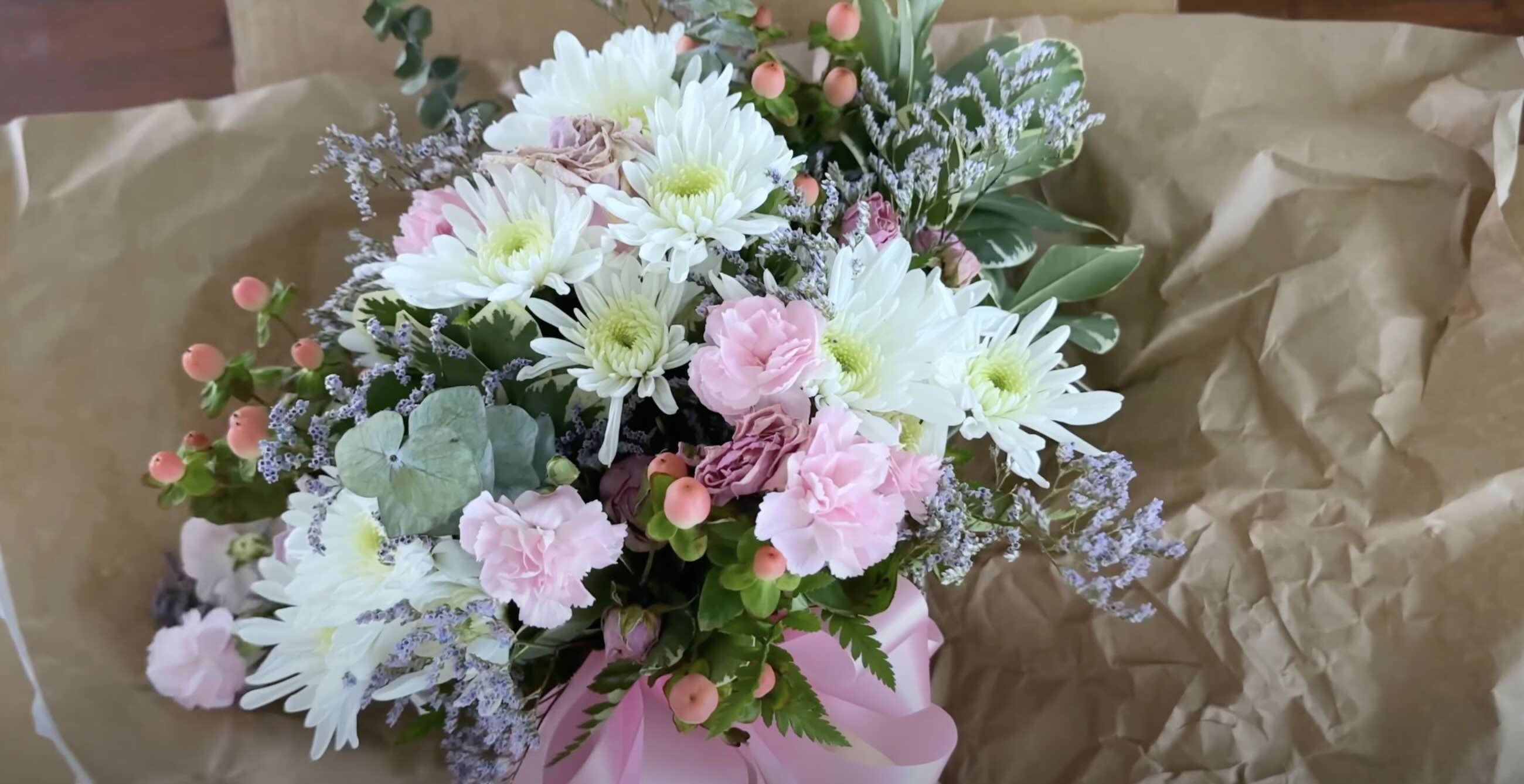
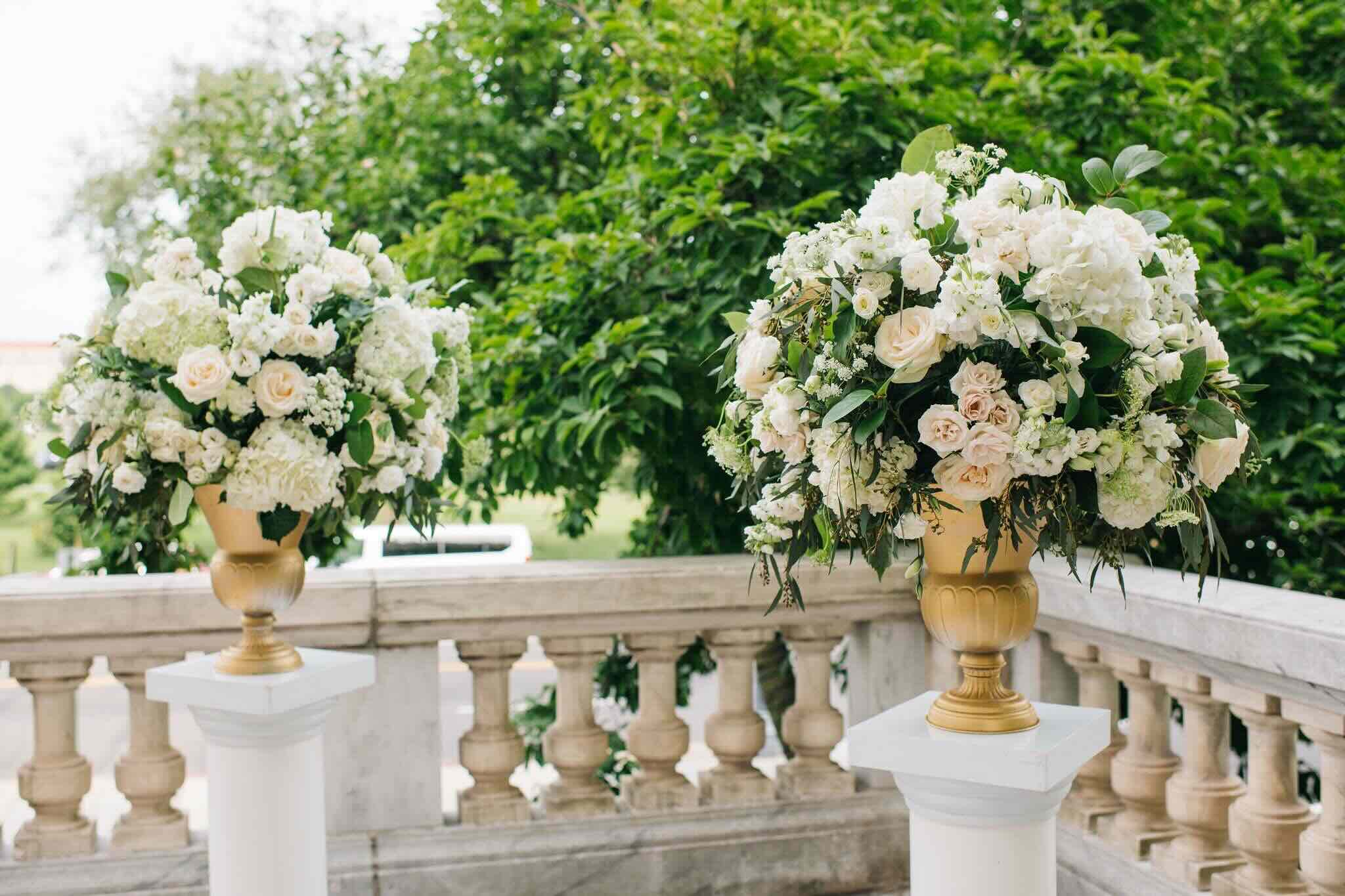
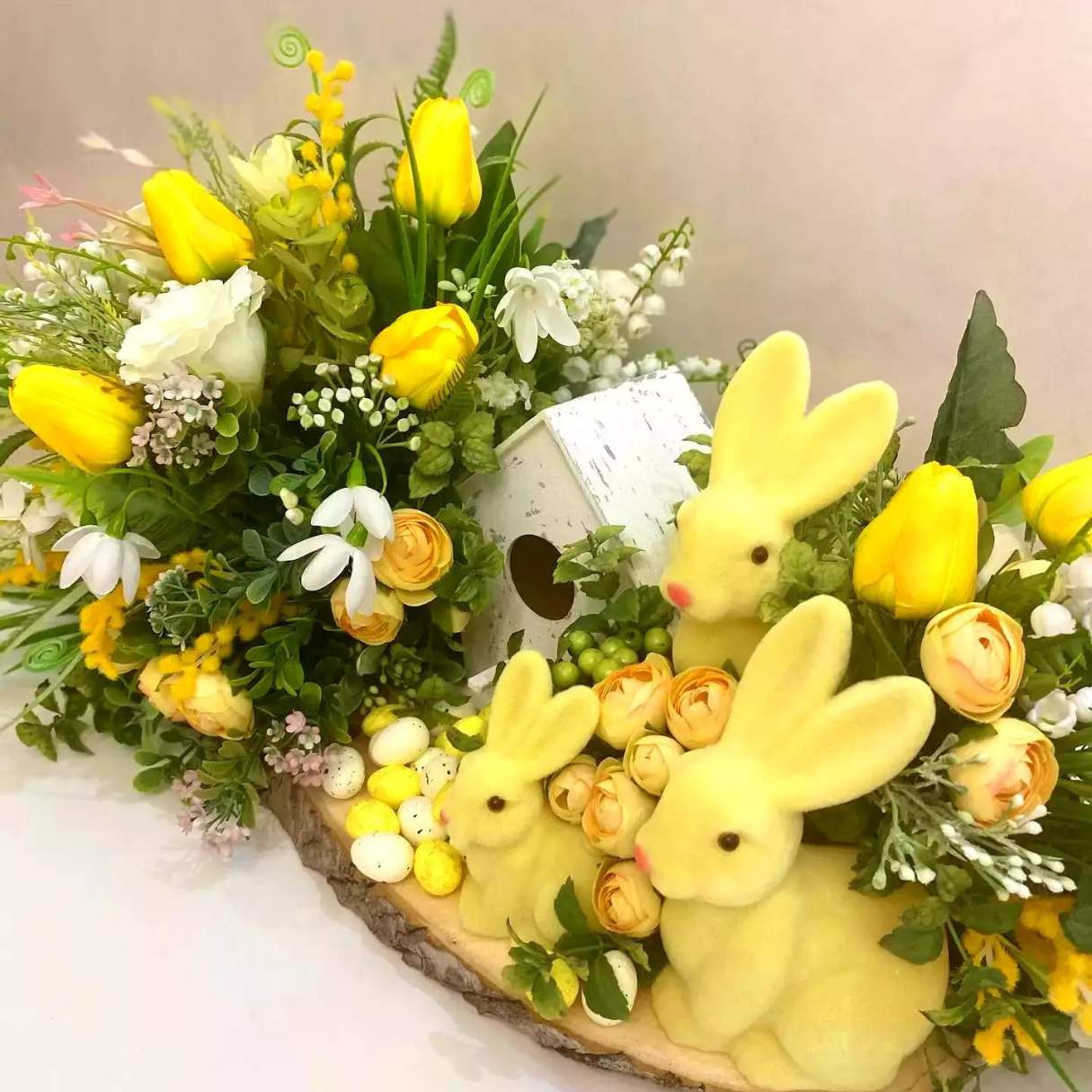
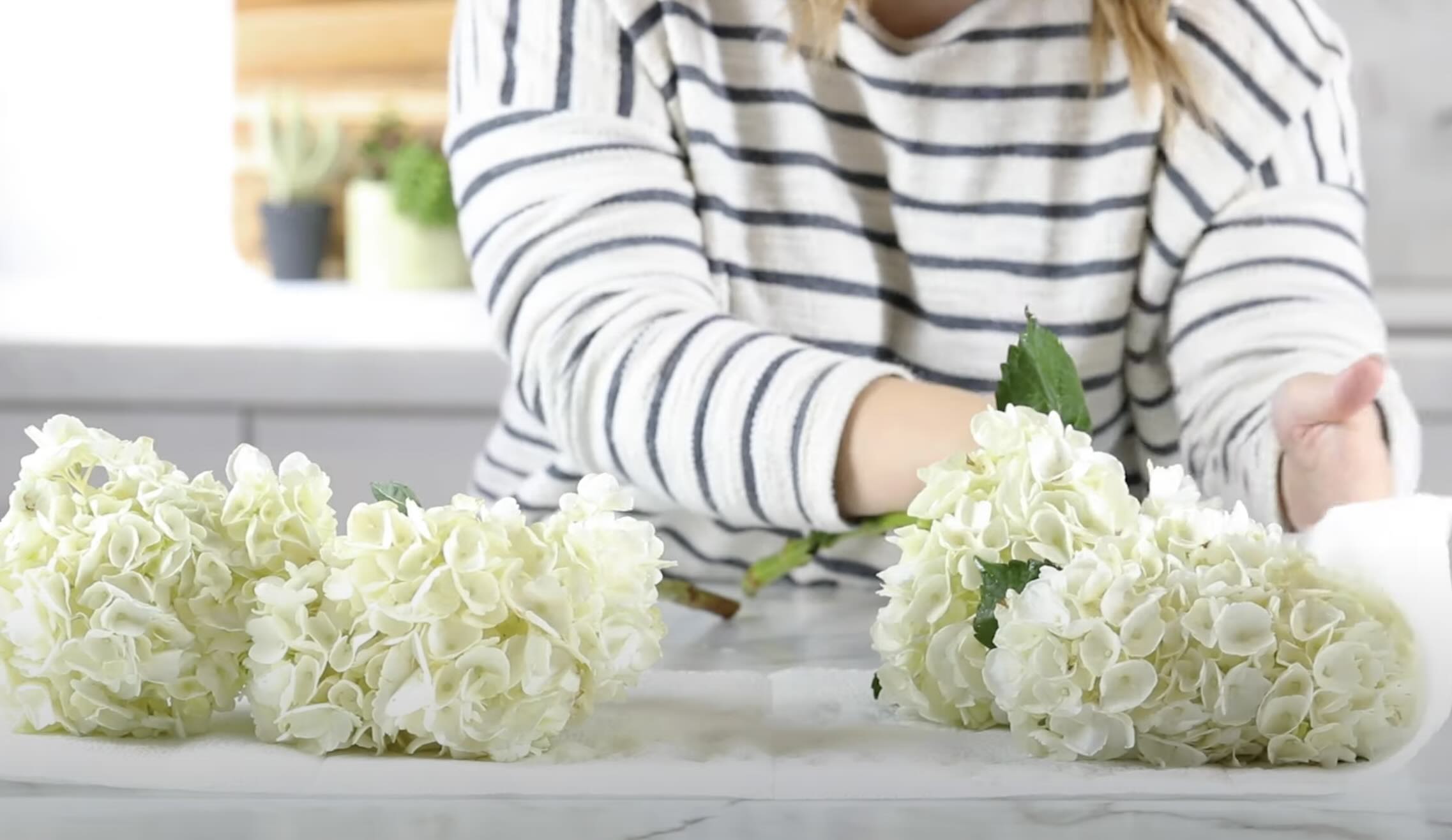
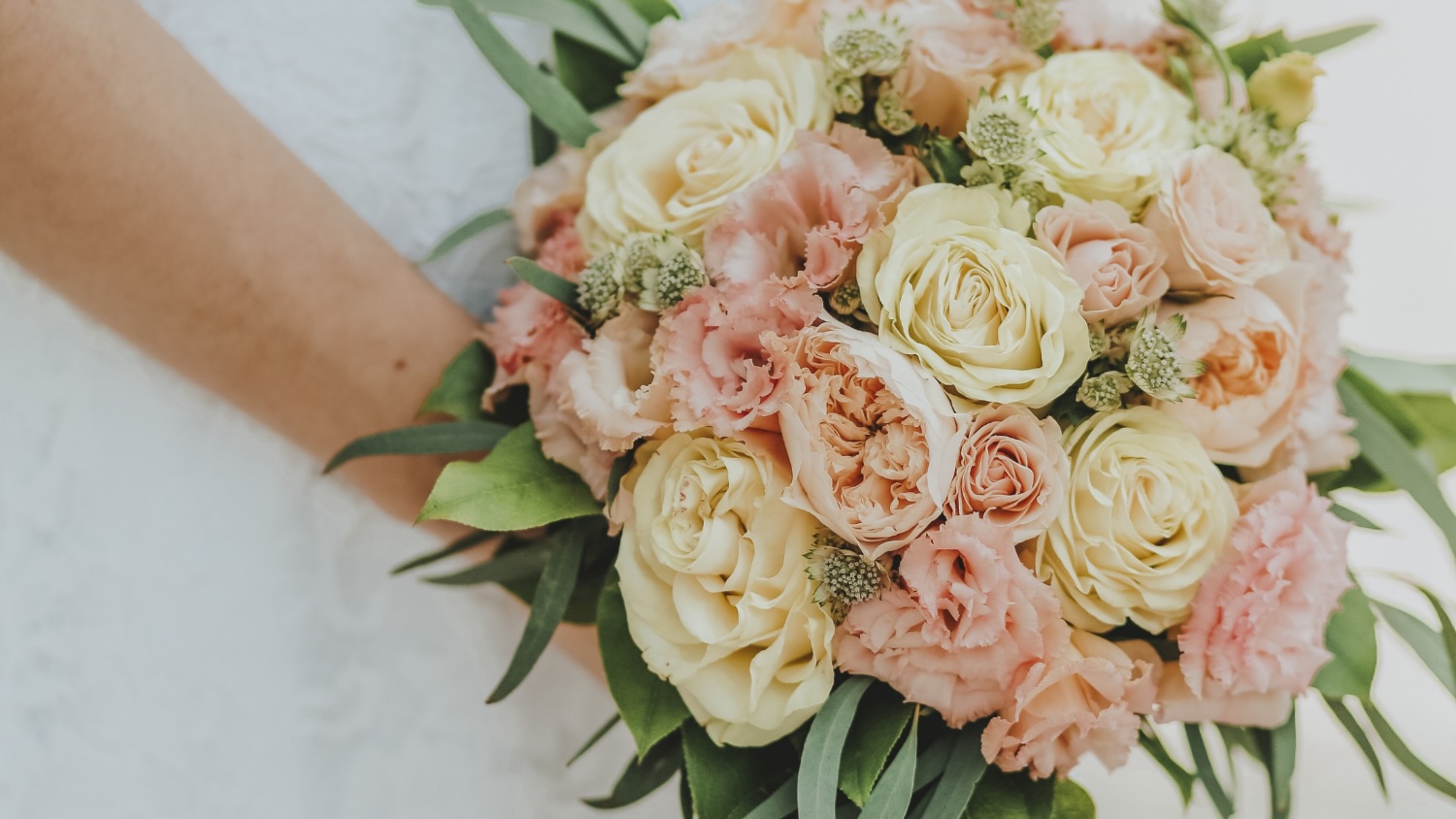
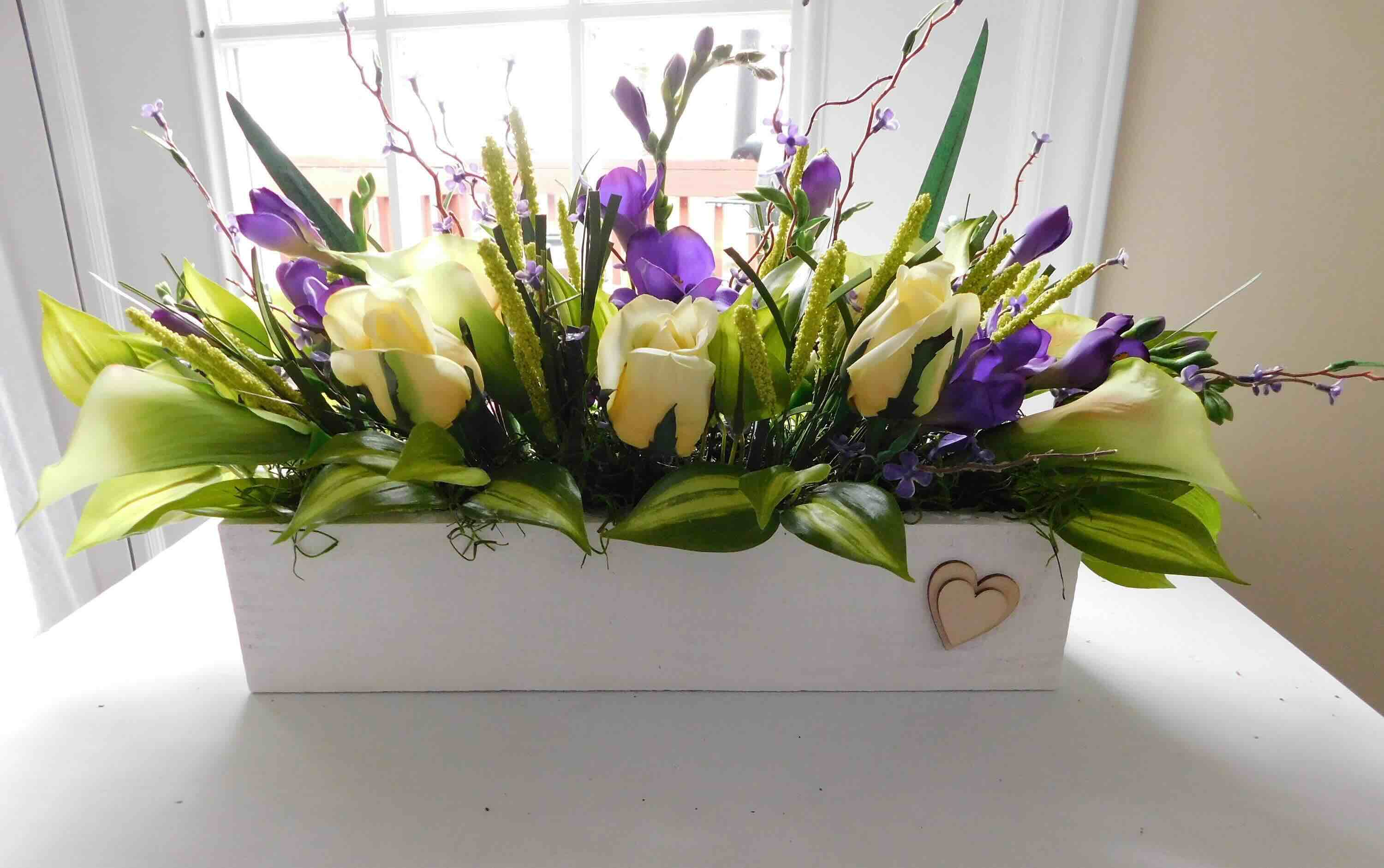
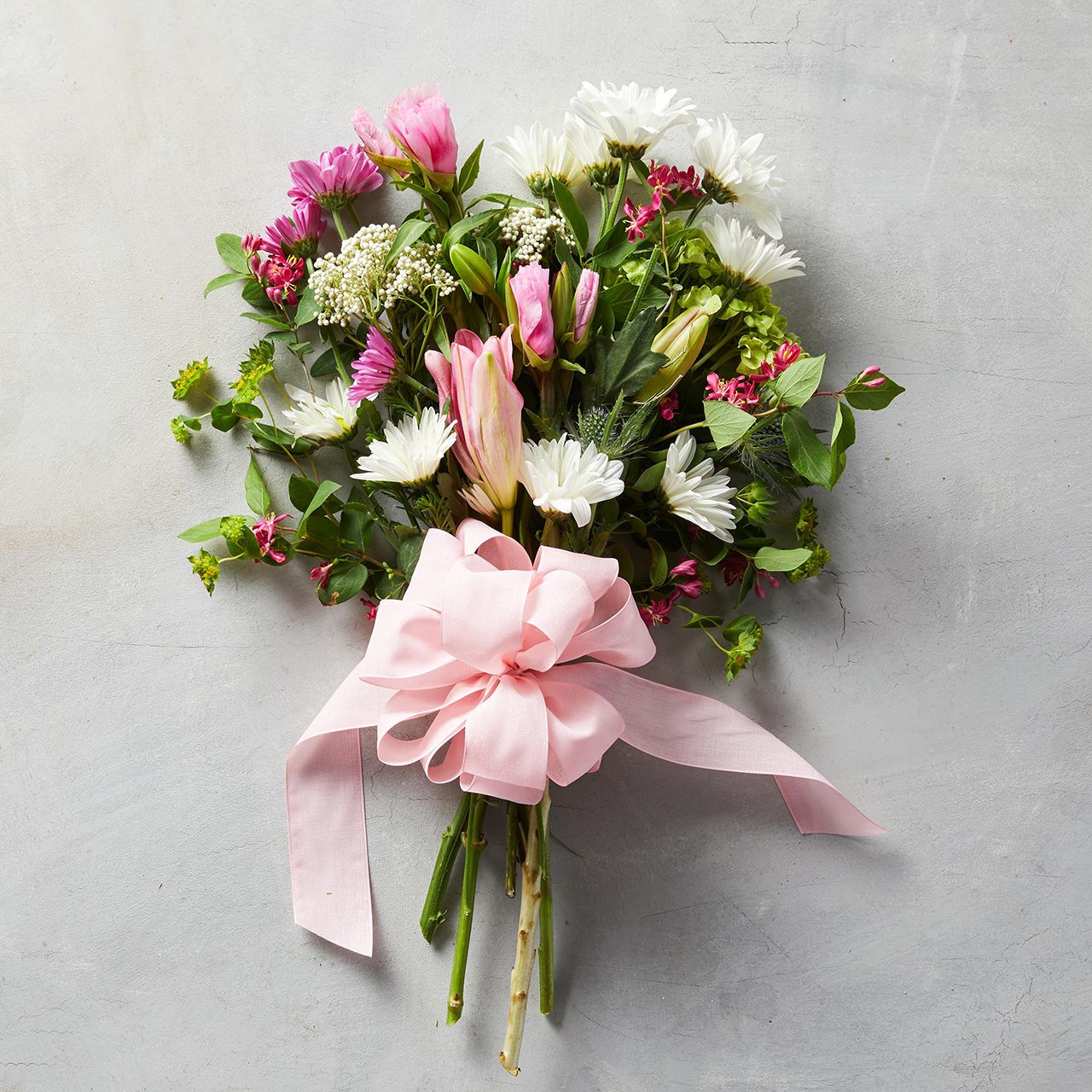
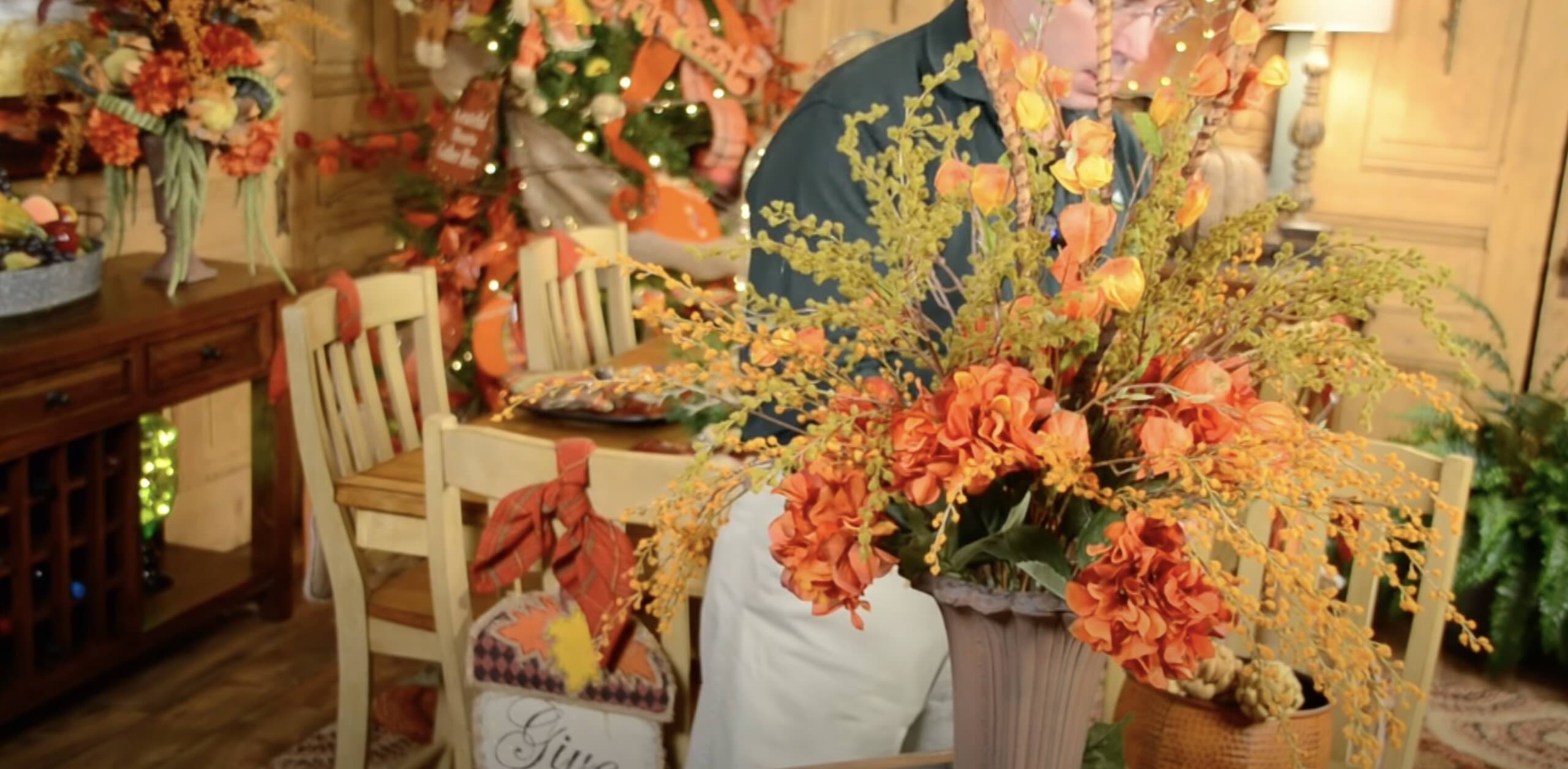

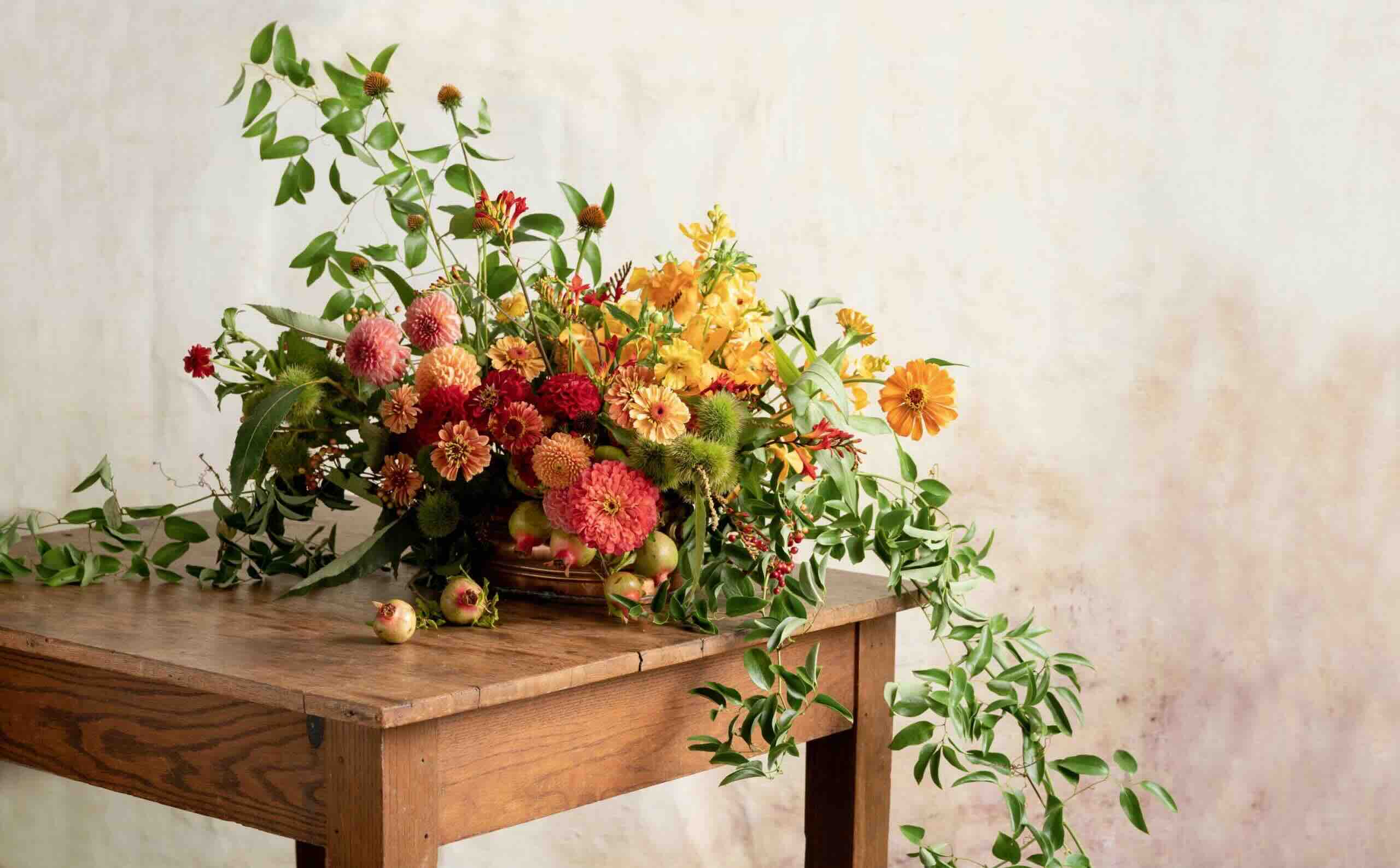
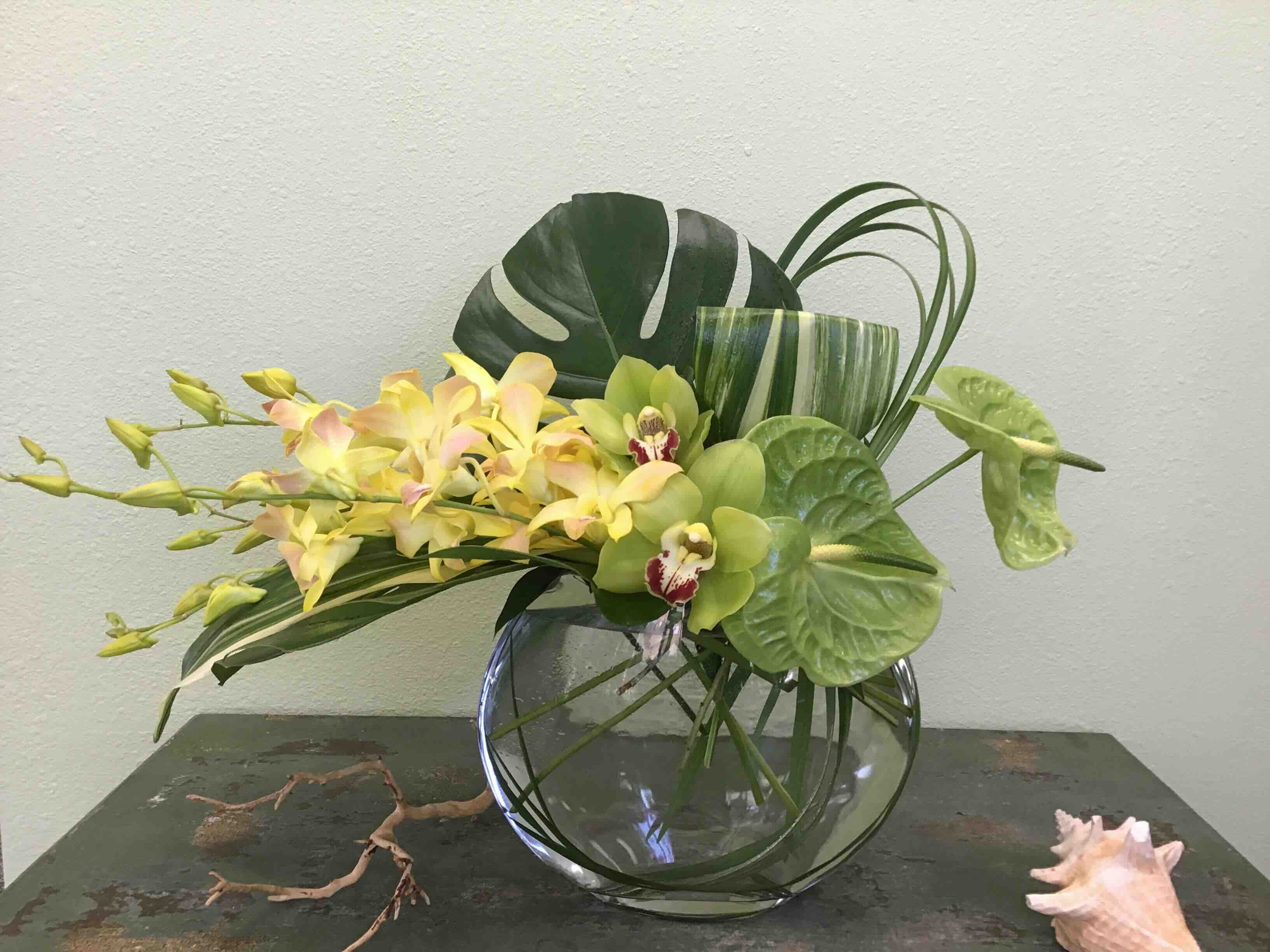
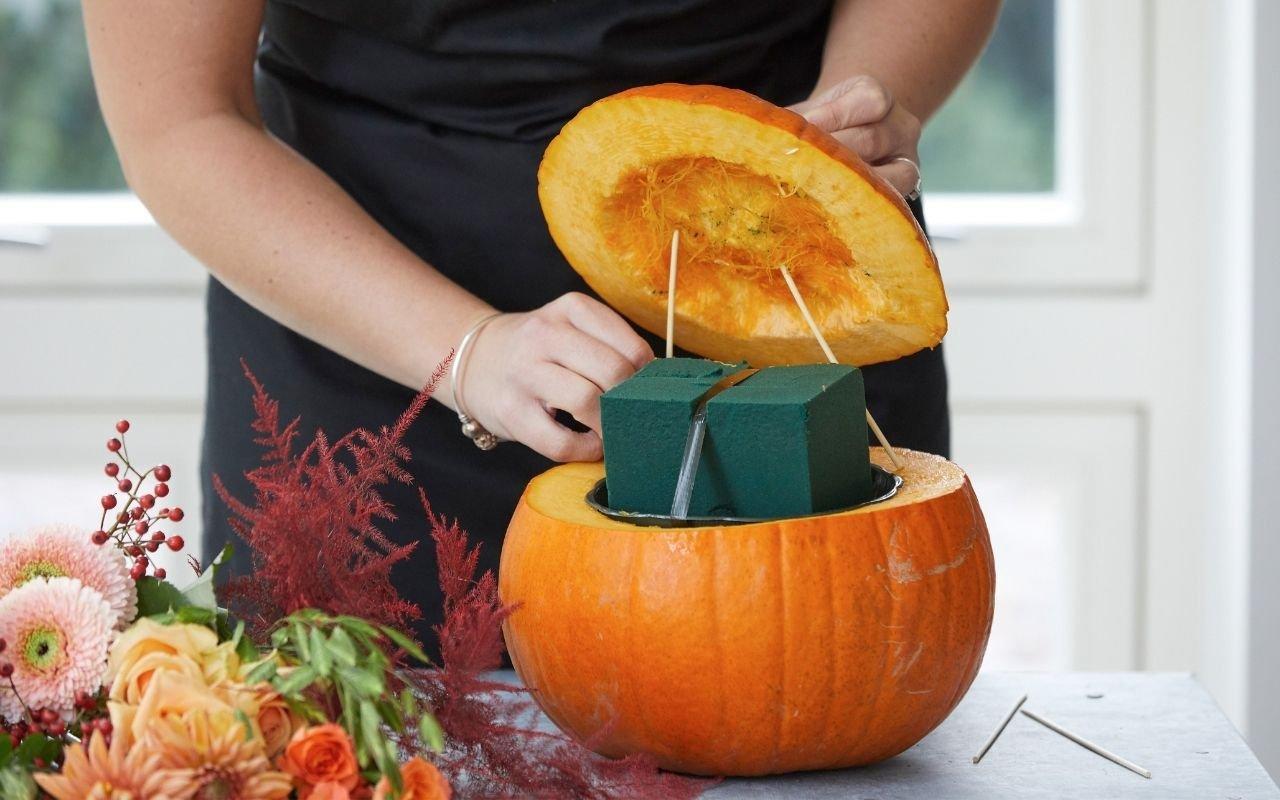

0 thoughts on “How To Sell Floral Arrangements”